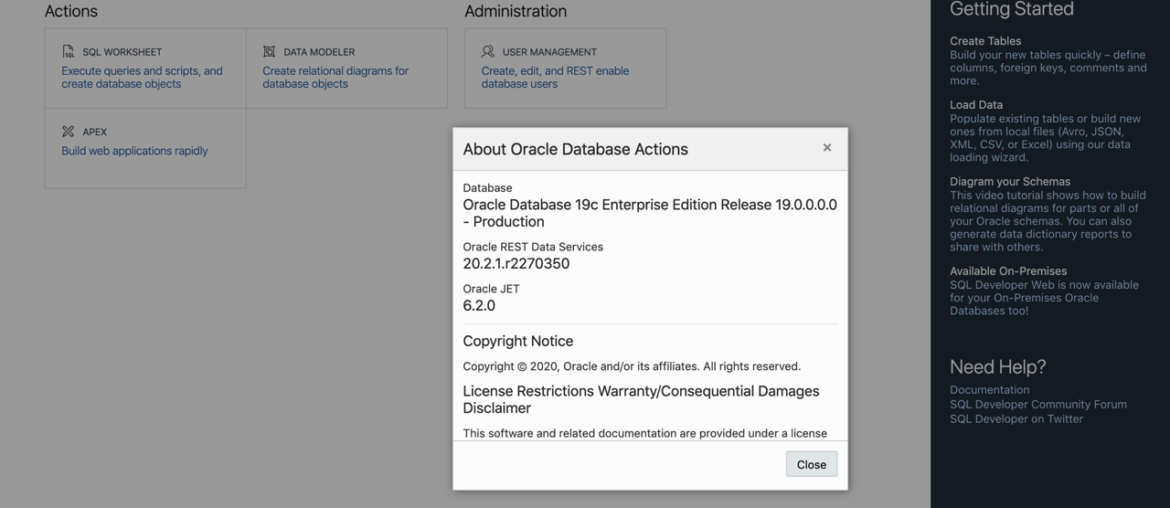Version 20.2 of SQL Developer Web (via ORDS 20.2.1) is being deployed to the Autonomous Shared Platform this week – your Autonomous Data Warehouse (ADW)/Transaction Processing(ATP)/JSON Database(AJD) Shared Services to be specific. It’s already live in many regions, and the roll-out should be finished soon if you’re not seeing it yet.
The screenshots in this post are from my personal Always Free ATP service in the Ashburn, VA data region.
If you’ve already deployed or seen SQL Developer Web in ORDS 20.2 for on-premises installs, what you see in Autonomous will look very familiar to you.
For everyone else, the look and feel of SQL Developer Web has been given a major facelift.
New Home Screen
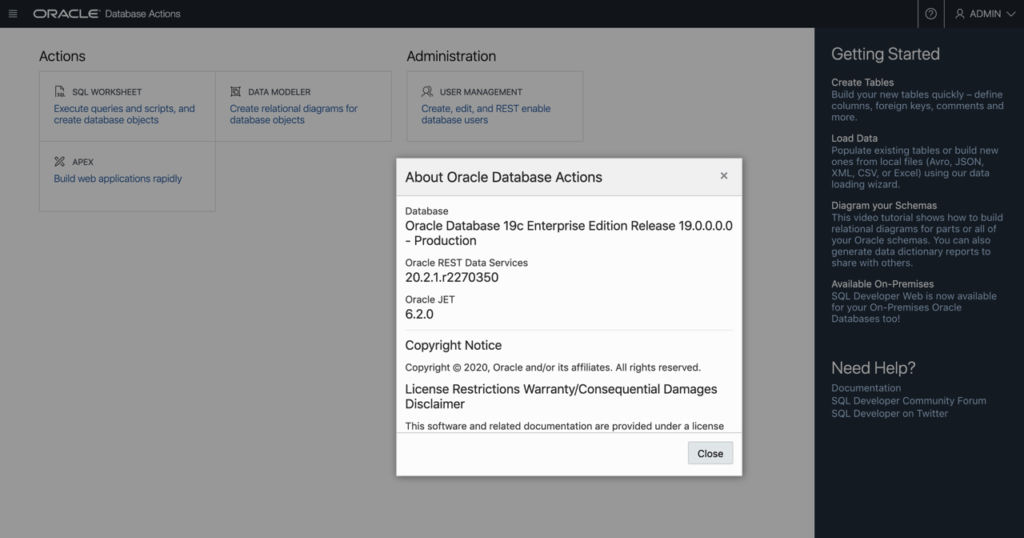
Based on what you can do in the instance, you’ll see a series of cards on the landing page. You can use these to jump into what you need to do next. You’ll also see some handy links on the right.
As features are rolled out, you’ll see MANY more cards show up here. The next big feature to come will be our REST Workshop (stay tune!)
The other UI tweak is that navigation has pivoted from the top in a toolbar of sorts, to the left – accessible via clicking the hamburger button.
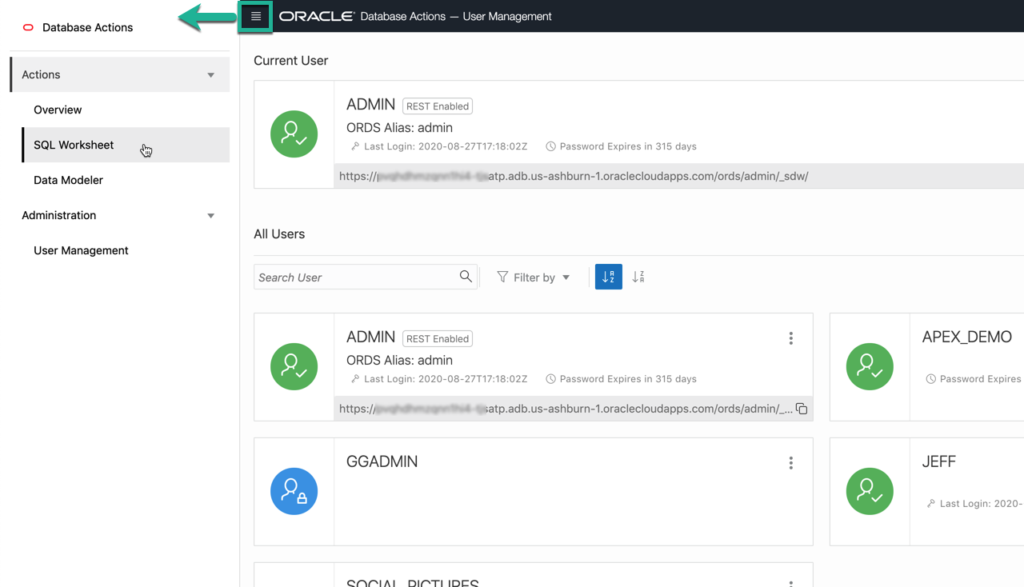
Managing Users
Create, edit users, grant roles & privs, REST Enable accounts, see who’s password is about to expire, or unlock an account – all very easy now.
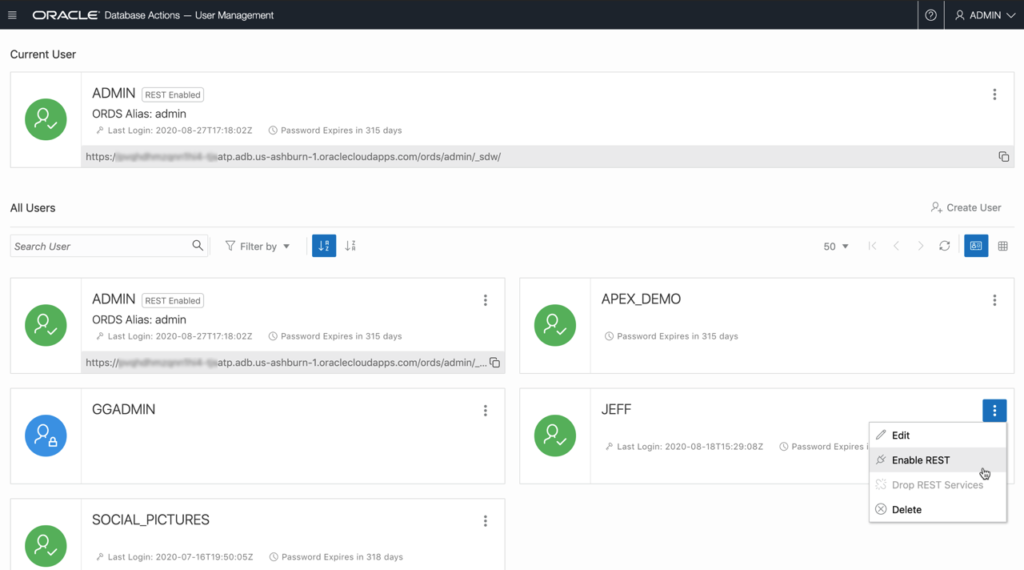
If you need a deeper dive on these screens, here’s a quick, 5 minute read.
Running Queries on Services other than LOW
Your Autonomous Database has a few different Consumer Groups/Plans – these determine how much memory, CPU, and possibly degrees of parallism for your queries and scripts.
The ORDS connection pool is set to run everything on the LOW consumer group; however, in this latest version of SQL Developer Web, you can set the Service you want your SQL Worksheet queries to run on.
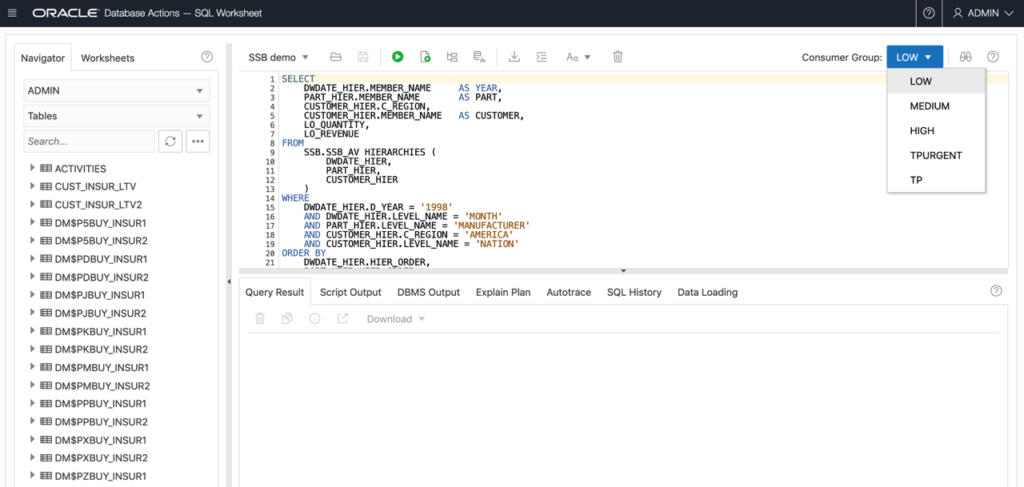
For Self-Hosted ORDS, it’s time for you to upgrade!
ORDS version 19.4.6 was released earlier this Summer, and for the first time offered Autonomous Shared subscribers the chance to stand up their own ORDS in OCI.
As the managed ORDS environment has been updated for your Autonomous services, you now must upgrade your customer managed ORDS installs from 19.4.6 to the one you see on Oracle.com (20.2). So while having your own mid tier is nice and flexible, you now also have the responsibility to maintain the version to match the one managed by Oracle Cloud as closely as possible.


